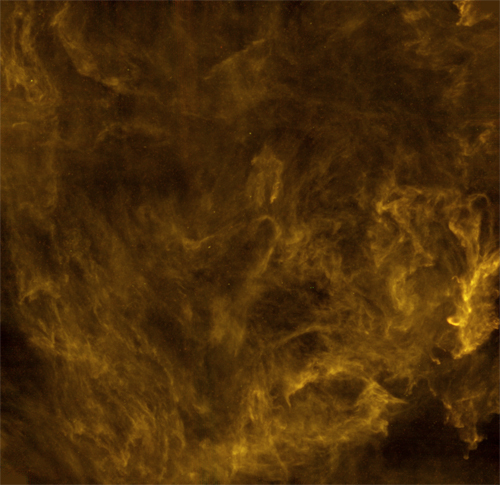| Basic Information | |
| What is this? | The Polaris Flare, a network of dusty filaments |
| Where is it in the sky? | In the constellation of Ursa Minor the Little Bear |
| How big is it? | The region is tens of light years across |
| How far away is it? | Around 500 light years away |
| What do the colours represent? | The almost constant colour shows that the region is all at around the same temperature |
Downloads
See this object in:
This network of filaments in the constellation of Ursa Minor are seen by SPIRE. There are no stars forming along these filaments yet. The cold gas and dust in the filaments is seen most in the far-infrared. The resolution of Herschel has allowed astronomers to measure the widths of the filaments. Suprisingly, they were all found to be almost the same width, rather than having a wide range as was expected. This gives a clue as to their formation.
By comparing with computer simulations, the astronomers have concluded that the filaments may be formed when slow shockwaves dissipate in the interstellar clouds. The shockwaves are the result of the energy produced by exploding stars, which cause a great deal of turbulence in the surrounding regions. These shockwaves travel through the Galaxy, sweeping up gas and dust and forming the dense filaments we see today.
Since the interstellar clouds are extremely cold, at around 10 degrees above absolute zero (or -263 Celsius), the speed of sound is relatively slow – at just 200 m/s (450 mph), compared with 340 m/s (760 mph) at sea level here on Earth. This means that the slow shockwaves are the interstellar equivalent of sonic booms. As they lose energy in the clouds, they leave behind these tenuous filaments of gas and dust.
This region is around 500 light years away, and is part of the Gould Belt, a ring of similar star forming regions around the sky, which is being studied by Herschel as part of the “Gould Belt Survey”.

